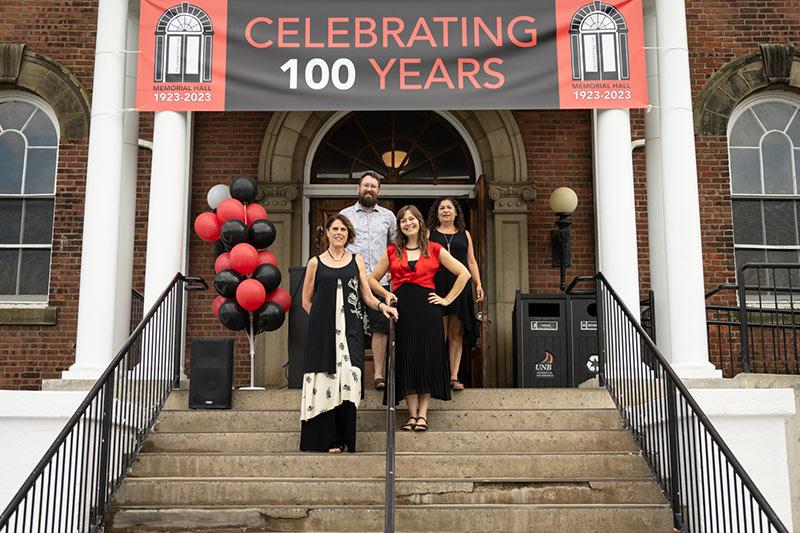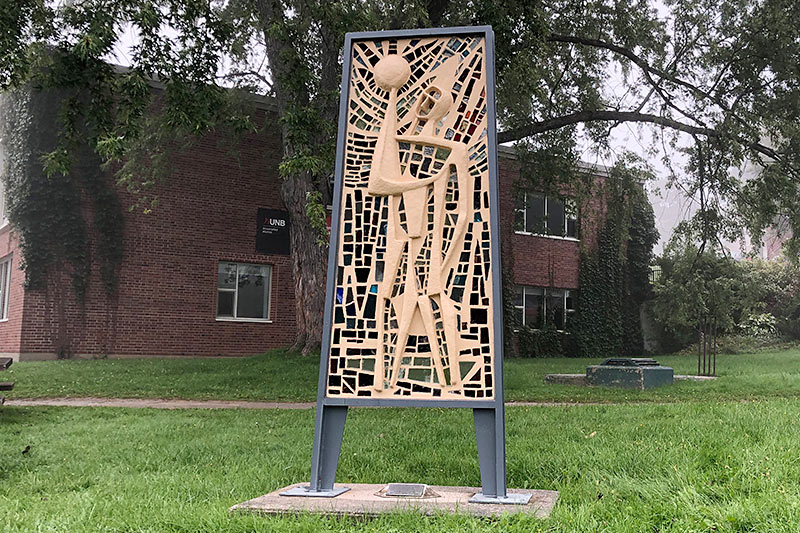UNB Art Centre Newsletter - October 2023
Author: UNB Art Centre
Posted on Oct 6, 2023
Category: UNB Art Centre , Design Works Camps , Leisure Learning

Happy Thanksgiving! Enjoy the beauty of the season!
Leisure Learning

Interesting, Unique and Fun! Enjoy a Fall Course!
Be a weekend explorer! Discover the incredible variety of one-day workshops in October. There’s everything from Self-Publishing & Marketing to Kundalini Yoga and Fixing Common Writing Errors. Offered online and in-person!
Experience the richness of a new culture or language. Immerse yourself in the beauty of the Arab-Muslim, Ukrainian and Acadian cultures. Or expand your horizons and communication skills by learning French, American Sign Language, Spanish or Arabic.
Sign up early & save!Register two weeks ahead for any Leisure Learning course and receive a 15% discount!**Discount does not apply to French or one-on-one courses. |
UNB Art Centre

Take a step back in time with the Memorial Hall 100th Anniversary Exhibition, on display until Oct. 27. This beautiful black and white photography exhibition chronicles the history of Memorial Hall. In addition, a video showcases people’s memories of the building, along with a Memory Book.
Memorial Hall has a full and varied history. Originally built to commemorate the students and alumni who lost their lives in World War I, today Memorial Hall is the hub for the Fine Arts at UNB and home to the vibrant UNB Art Centre, the Centre for Musical Arts and Theatre UNB.
The 100th Anniversary exhibition is on display until Oct. 27. The galleries are open 9 a.m. - 4 p.m. weekdays and during special events. Admission is free to members of the public. Memorial Hall is located at 9 Bailey Drive on the UNB Fredericton campus. For more information, please call 453-4623.

Focus on the Collection:
Canadian sculptor Claude Roussel’s Man and Research
If you wander UNB Fredericton’s beautiful campus, take the opportunity to walk between the Alumni Memorial building and Memorial Hall. Outside, you’ll discover the stunning 2.5 meter high free-standing bas relief sculpture entitled Man and Research by Canadian sculptor Claude Roussel.
This unique stain glass sculpture was installed over 60 years ago. Purchased with assistance from the Canada Council in 1963, UNB’s then president Dr. Colin B. Mackay described the new public art as a “fine and imaginative work of sculpture”, during the unveiling ceremony.
Curator Patrick Condon Laurette described the artwork in a 1993 exhibition catalogue “Roussel in Relief”:
His “free-standing relief”, Man and Research (1963; University of New Brunswick), had experimented with a ground of French chunked glass ... incorporating a contoured resin cement figure balancing a sphere in his right band. The oversized figure, pictorially framed, is reverse variant of Le Corbusier's Modular Man, the “man-standing-upright" with left arm raised, palm skyward, the other arm concealed, who represents a standard, architectonic, measure based on ideal (Golden Section) proportions. Roussel's schema of a detached man, shot through with the light of knowledge, is a secular stained glass window whose iconographical median is the Salvator Mundi: Christ, Saviour of the World, holding the globe. But, in an age of basketball scholarships and relaxed liberal arts, he illustrates an easygoing Atlas. Roussel's sentiment was that "through the use of chunk glass plus illumination, I feel you can bring the layman to accept an abstraction."
Having just returned to his Fredericton home in 1961 from a Canada Council Senior Fellowship studying Europe’s decorative and architectural art, Claude Roussel brought back a rich supply of Dalle de verre from France. This thick chunk glass became the material of choice in the creation of this sculpture as it offered refractive and reflective illumination qualities.
The challenge for Roussel’s outdoor sculpture was finding a suitable support material that would endure the extremes of Canada’s weather. At the time, Roussel consulted with UNB’s engineering department to determine the durability of a novel support material – an epoxy resin cement.
The sculpture which weathered the elements for over 60 years, eventually began to show signs of deterioration. Stained glass master Ned Bowes, who restored the beautiful windows in Memorial Hall, was contracted to undertake the sculpture’s restoration. He began by researching Roussel’s method, then drilling holes in the epoxy resin and inserting stainless steel wire to reinforce the structure. Cracks were then filled with epoxy and sealed with a special paint.
Roussel’s achievement in architecture and decorative sculpture was recognised by the Royal Architectural Institute of Canada, who awarded him the Allied Arts Metal in 1964. His contemporary expression was influenced by tutelage of the best artists in Quebec at the École des Beaux-arts in Montreal and during the artistic revolutions of Le Refus Global, 1948, and Les Automatistes, 1941–1960.
This piece of UNB’s heritage remains as relevant to today as it was back in the 1960s, as the university endeavours to facilitate research and scholarship and the development of innovative ideas with a global impact.
*With contributions from Suzanne Roussel, Claude Roussel’s daughter.
![]() @UNBArtCentre
@UNBArtCentre ![]() unb.art.centre
unb.art.centre ![]() UNB Art Centre
UNB Art Centre
go.unb.ca/enrichment | 506 453-4623 | pce@unb.ca

